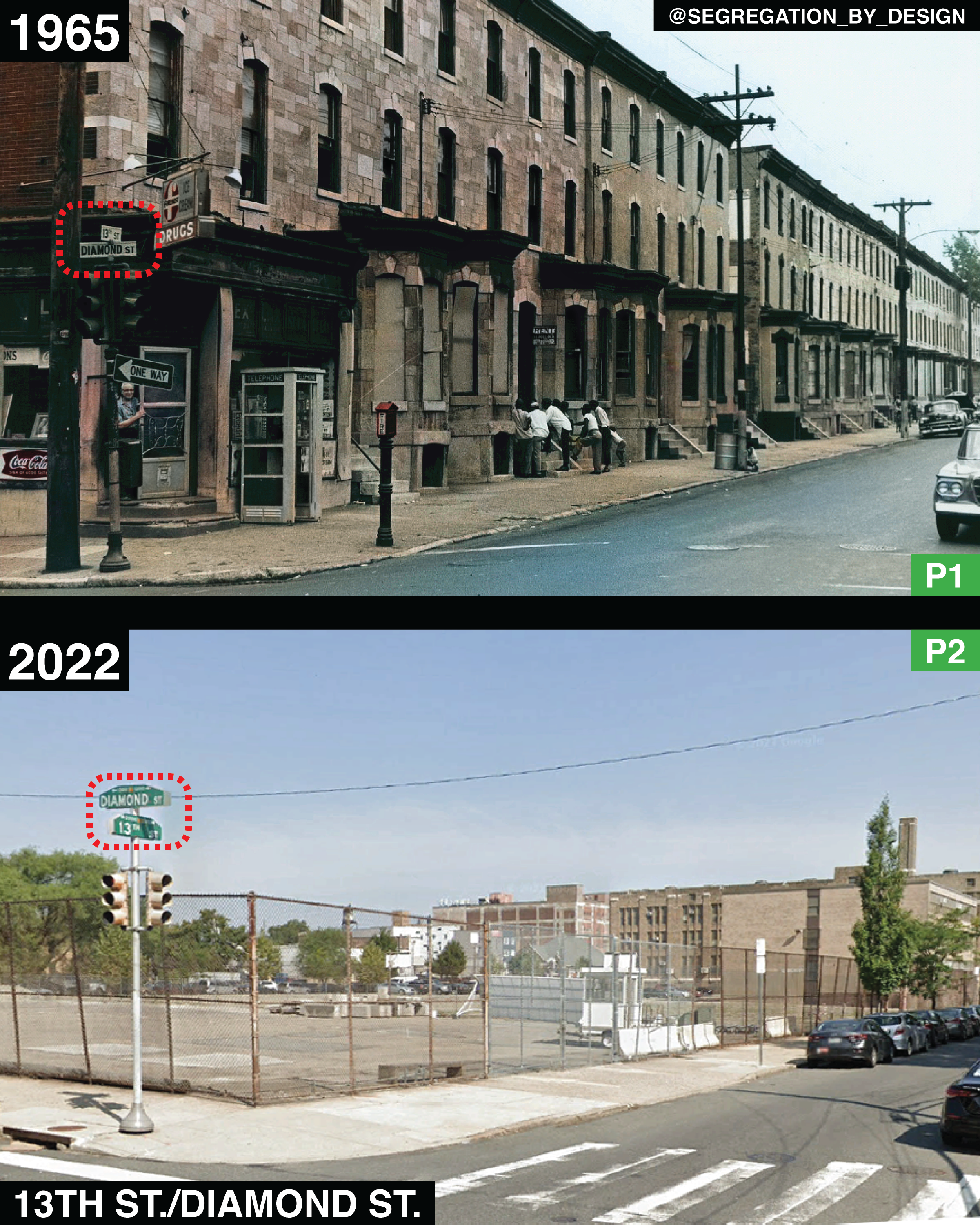PHILADELPHIA: TEMPLE UNIVERSITY



Since its founding at the Grace Baptist Church in North Philadelphia in 1888, Temple University’s physical expansion has been at the direct expense of the built environment of the surrounding neighborhood’s primarily Black population. By 1966, Temple University had displaced roughly 2,750 families (well over 10,000 people)—96% of whom were families of color (Source: American Panorama at @urichmond). While today the University is an excellent resource for the community, in the past its expansion has shown a callous disregard for North Philadelphia.
Temple had little concern for the displaced residents. By their own admission in a “Report on Minority Group Considerations” in the 1960s, “the proposed reuse of the area is for institutional uses and, therefore, it is not anticipated that any of these families would relocate in the project area.” By 1979, Temple’s campus had grown from its original 4 acres to over 70.
While members of the community and sympathetic students have periodically protested the state-funded university’s physical expansion, ultimately much of the neighborhood has been lost. Moreover, thousands of units of affordable, transit-accessible, and historic housing have been destroyed, to be replaced with significantly less-dense institutional uses, outsize athletic facilities, as well as several parking garages and surface lots.
Seen here: dozens of homes in the primarily Black neighborhood of Upper North Philadelphia are razed for the expansion of Temple University Hospital. Much of the expansion was for two massive parking structures, the Ontario and Tioga garages, as well as a steam plant. Despite the hospital’s excellent transit connections with the Broad Street Line subway and the Germantown Ave trolley (now abandoned), Temple determined ample parking for suburban commuters was more valuable than the surrounding neighborhood.

